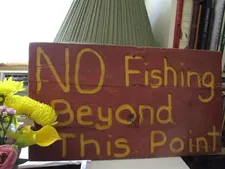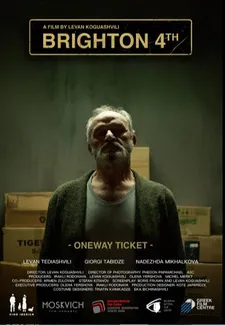 |
| Levan Koguashvili, director of Georgia’s Oscar submission Brighton 4th with Anne-Katrin Titze: “New York is definitely a city of signs.” |
At the 93rd Academy Awards this year, Tunisia’s Oscar submission The Man Who Sold His Skin, directed by Kaouther Ben Hania, was one of the four deserving nominees which lost out to Denmark’s entry Thomas Vinterberg’s boys-will-be-boys Another Round, starring Mads Mikkelsen. Dea Kulumbegashvili’s Beginning had been Georgia’s entry. For the 94th Academy Awards, Georgia has submitted Levan Koguashvili’s perceptive Brighton 4th, a highlight of the Tribeca Film Festival, winning Best International Narrative Feature (produced by Irakli Rodonaya, Olena Yershova, Michel Merkt, Kateryna Merkt), Best Screenplay Boris Frumin, and Best Actor Levan Tediashvili.
 |
| Kakhi (Levan Tediashvili) with his son Soso (Giorgi Tabidze): “Signs tell something about our life, about modern life, modern dynamics.” Photo: Kino Iberica |
In the second installment of my conversation with Levan Koguashvili, we discussed arriving in a hearse and Joseph Beuys, Brooklyn’s Brighton Beach shops where he filmed, loving signs, the Strand Book Store, Robert Frank, depth, levels, and action, and John Turturro in The Big Lebowski.
Brighton Beach, nestled at the ocean right next to Coney Island, is where Kakhi, a former Georgian wrestling champion (as is the actor Levan Tediashvili who plays him), is headed. His son Soso (Giorgi Tabidze) is in trouble and he embarks on setting him straight. In a boarding house led by his sister-in-law, where his son resides, Kakhi makes the acquaintance of an illustrious group of emigrants, all trying to survive in an environment marked at the ends of the spectrum by corruption and song. With the help of Phedon Papamichael’s exquisite cinematography, the film takes flight without ever losing its footing in quotidian reality.
From Tbilisi, Levan Koguashvili joined me on Zoom for an in-depth conversation on Brighton 4th.
Anne-Katrin Titze: An element in your film that is beautifully comical and surreal is the arrival in Brooklyn in a hearse. It reminded me of Joseph Beuys arriving in an ambulance for his work called I Like Amerika and Amerika Likes Me. He never stepped on the ground in New York and just had the ambulance drive him. Tell me about the hearse!
 |
| Levan Koguashvil on Kakhi (Levan Tediashvili): “We said, let him arrive in a hearse, we know how the movie ends, so maybe it’s logical.” Photo: Kino Iberica |
Levan Koguashvili: The hearse thing came from the script, which Boris [Frumin] wrote. It was originally in the script and at some point I thought that maybe introducing the hearse once is not enough and we should develop this idea. Later on we had the idea that when they kidnap the Kazakh guy, they do it in a hearse, which is the car of the movie. Then it turned out that kidnapping someone in a hearse is very uncomfortable. When I saw American hearses, they have specific placement of the seats. And it’s really impossible to kidnap someone in this kind of hearse, so we said, let him arrive in a hearse, we know how the movie ends, so maybe it’s logical.
AKT: I have visited Brighton Beach and I thought it’s great how you captured the shops - on the one hand very realistically, on the other hand we get the symbolism. When father and son buy gloves, there are these great shots of signs. One sign says Hair Extensions and it’s cut off so all we see is tensions. On the left side is a sign that says For Pretty Women, $4. Did you scout the neighbourhood for these signs or did they happen to you?
LK: I love signs, you know. I love American photography. I always buy photography books. I go to the Strand, that’s my favourite place.
AKT: Mine too. I love buying books there.
 |
| NO Fishing Beyond This Point in New York City Photo: Anne-Katrin Titze |
LK: On the second floor you have these amazing photography books. I just bought a few days ago Robert Frank’s book The Americans. And the signs tell something about our life, about modern life, modern dynamics. I don’t know, it’s the comedy of something. It tells about something that surrounds us. I always pay attention to signs and what we see in the shops. It’s something about life.
Right after we finished shooting there, we finished the principal photography of the film, and we had this luxury of just wandering around a couple of days and to shoot whatever we like in the streets. It was the best days, just the cameraman with the camera and these amazing places where you catch people and interesting stores and signs.
AKT: I saw Robert Frank shortly before he died, sitting on a bench outside his home with his wife June. They looked like a sign themselves, it was quite stunning. Signs are everywhere, especially in New York. The one behind me says NO Fishing Beyond This Point.
LK: New York is definitely a city of signs.
AKT: You have images in your film that I have never seen before in cinema, for instance, the dad in the lower bunkbed training his son in the upper bunkbed. Wow! Was it in the script? Did it come from your fascinating protagonist?
 |
| Levan Koguashvili on John Turturro in The Big Lebowski: “It’s one of my favorite scenes in movies.” |
LK: It’s a combination. In the script, when I worked with Boris we always think of physical activity. Because this is what you remember from movies. You don’t remember lines. You remember what they do on the screen. When we thought what father and son could do together, training was an obvious choice, since they are sportsmen, wrestlers. And then location tells you how to do it. We shot in a real location, a hostel in Brighton Beach.
Actually when I saw the room with bunkbeds, the super modesty of the place and this comedy of bunkbed in this tiny room, it told me let’s do it. And also my affection towards levels, because those are cinematic elements, which I was taught at NYU. What is important in a frame is depth and levels and the window and physical activity. It’s playing with some cinematic elements and it’s also about the comedy of these poor people, who are not rich and have this kind of relationship. Several aspects, several layers for me.
AKT: None of the people we see are treated as objects by the film. That’s what I meant when I said that at the start we could follow any one of them. When near the end we hear about the Kazakh man and the non-payment for the women an entire additional backstory opens up. That’s how layered it is.
When we first drop in on an unruly crowd of Georgian men watching soccer in a sports parlour in Tbilisi, it is still unclear which one of them we will be allowed to follow, as though the camera were in the middle of picking a hero.
 |
| Brighton 4th poster |
LK: Thank you. With the beginning we thought that maybe it’s too much. I just enjoyed doing this scene, not thinking about how it will continue. There were some objections, some people who worked on the script said yeah it’s an interesting scene, but why spend so much time with a character that doesn’t turn out to be the main guy? It maybe too much, you’re losing time. But sometimes you’re just doing what you want to do and don’t think much about structure and first act, second act, etc. I just wanted this gambling scene because I liked it.
We started improvising with the actors, I gave them a couple of lines. This is a conflict that I saw. I saw a guy who was constantly screaming in this gambling parlor betting house. I saw the people watching silently and he was screaming nonstop. Also it’s like a Big Lebowski inspiration, where you have this John Turturro character [Jesus Quintana] with a [bowling] ball, very eccentric. Those were two elements.
AKT: I wouldn’t have thought of that film.
LK: It’s one of my favorite scenes in movies.
Coming up - Levan Koguashvili on his film Women From Georgia.
Read what Levan Koguashvili had to say on his love of Italian Neorealism, working with the amazing Phedon Papamichael, Georgian painter Niko Pirosmani, Frédéric Boyer, Sophia Loren in Lady Liberty, Kakhi Kavsadze and when Georgian men sing, and the comedy of cheese.
The submitted motion pictures for the 94th Academy Awards International Feature Film category must be first released theatrically in their respective countries between January 1, 2021 and December 31, 2021. The deadline for submissions to the Academy is November 1, 2021.
The shortlist of fifteen finalists is scheduled to be announced on December 21, 2021. The final five nominees are scheduled to be announced on February 8, 2022.
The 94th Academy Awards ceremony, presented by the Academy of Motion Picture Arts and Sciences (AMPAS) is scheduled to take place at the Dolby Theatre in Hollywood, Los Angeles, California on March 27, 2022.





















